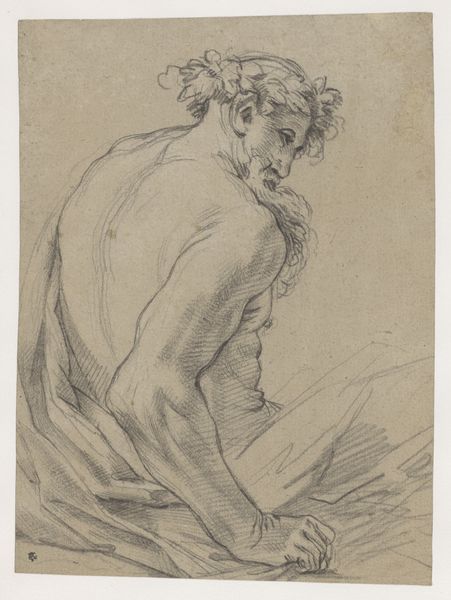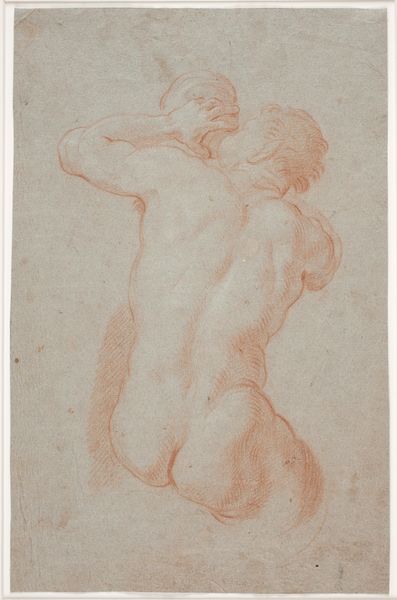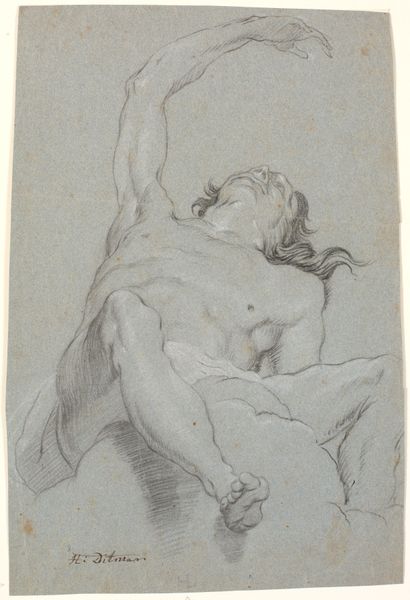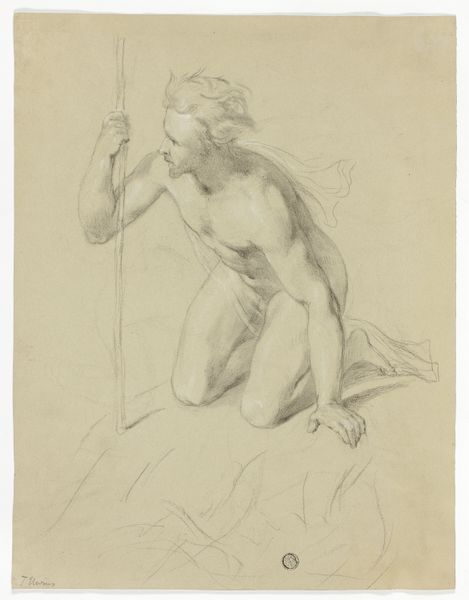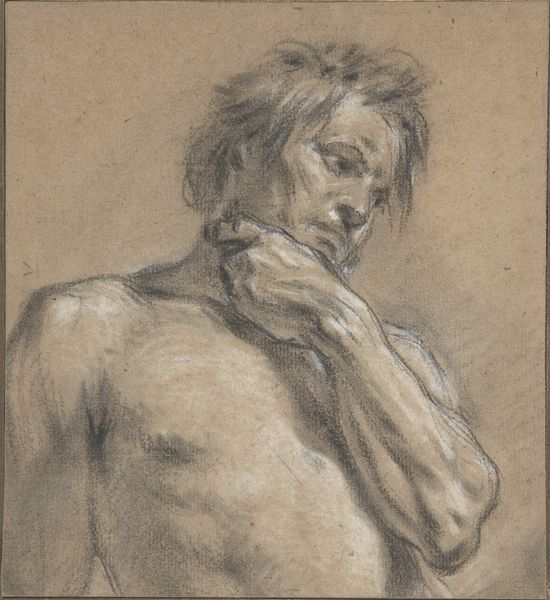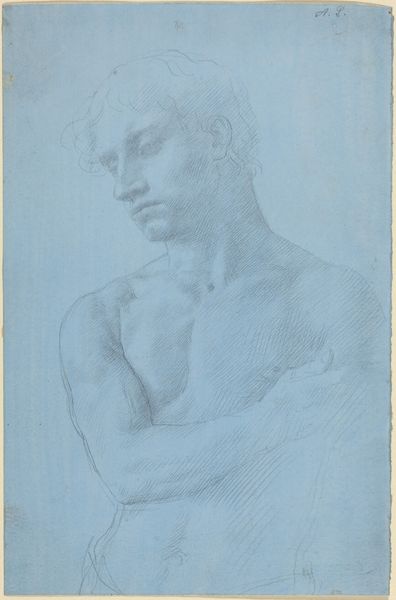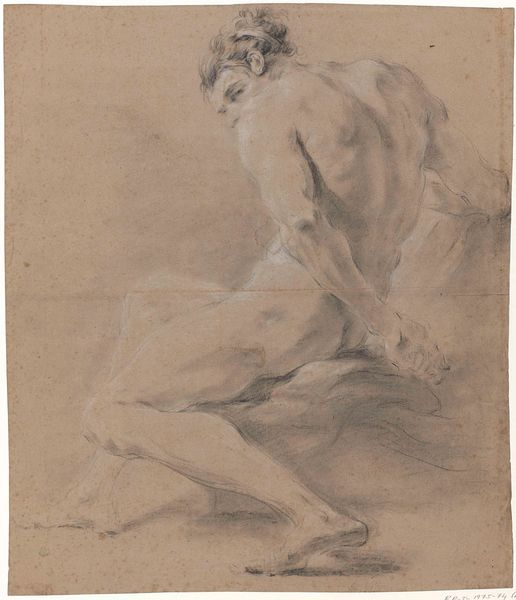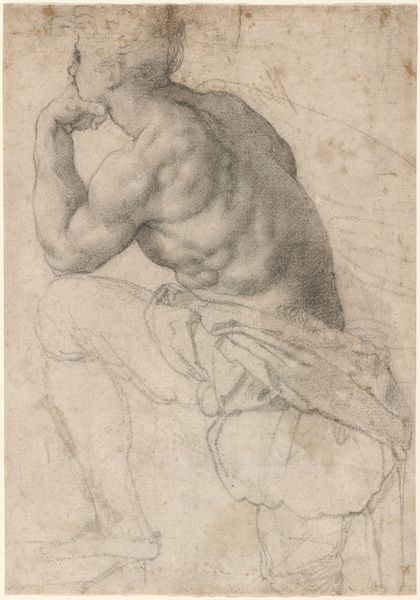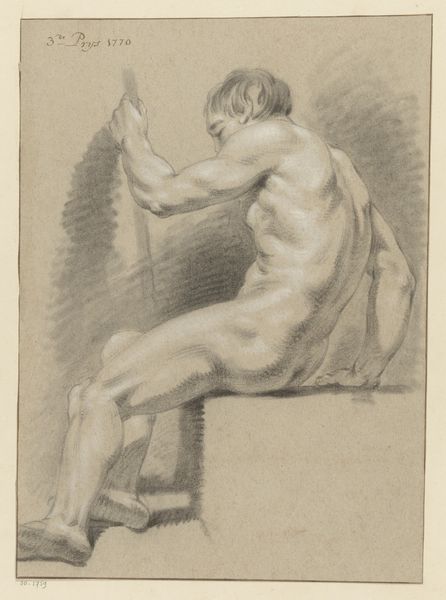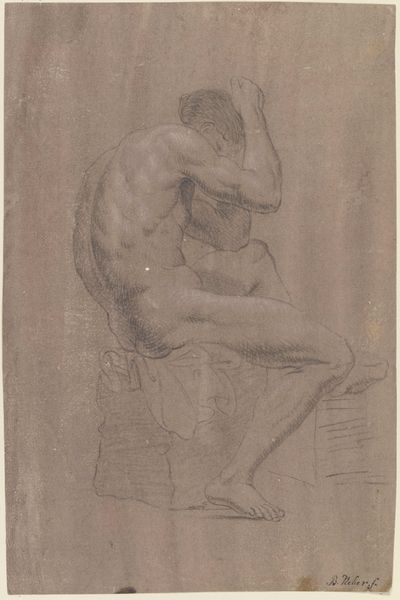
Mandlig modelstudie, overkroppen og underkroppen skitseret 1671 - 1738
0:00
0:00
drawing, pencil
#
portrait
#
drawing
#
baroque
#
pencil sketch
#
figuration
#
pencil drawing
#
pencil
#
portrait drawing
#
nude
Dimensions: 367 mm (height) x 251 mm (width) (bladmaal)
Editor: We're looking at a drawing titled "Mandlig modelstudie, overkroppen og underkroppen skitseret," or "Male Model Study, Torso and Lower Body Sketched," made sometime between 1671 and 1738 by Hendrik Krock. It's a pencil sketch. The figure's pose strikes me as quite pensive. What's your take? Curator: The very deliberate use of pencil for this Baroque study invites questions about artistic labour. Was Krock exploring the inherent qualities of this medium for his underdrawings or experimenting with it for expressive potential? The "lower body sketched" is more of a ghost form than an integral component. Is Krock telling us about the market and what was considered tasteful and lucrative in that epoch? The social and economic aspects are vital. Editor: Interesting. I hadn't considered the statement the materiality might be making. Curator: Consider where Krock sourced his pencils. Who mined the graphite, processed it, and distributed the tools to Krock? How does the rise of readily available drawing materials shift the hierarchy between sketches and finalized pieces? Was sketching, once a processual part of art production, increasingly seen as a lower art? The lines between commodity and "art" were shifting. Editor: So, the *making* of the drawing is as significant as the image itself? It reframes the artwork in light of labor, which prompts all sorts of new avenues for critical interpretation. I'll never look at a pencil sketch the same way again! Curator: Precisely! Recognizing the production allows for richer, more nuanced analysis that disrupts our preconceptions about what constitutes "art."
Comments
No comments
Be the first to comment and join the conversation on the ultimate creative platform.
